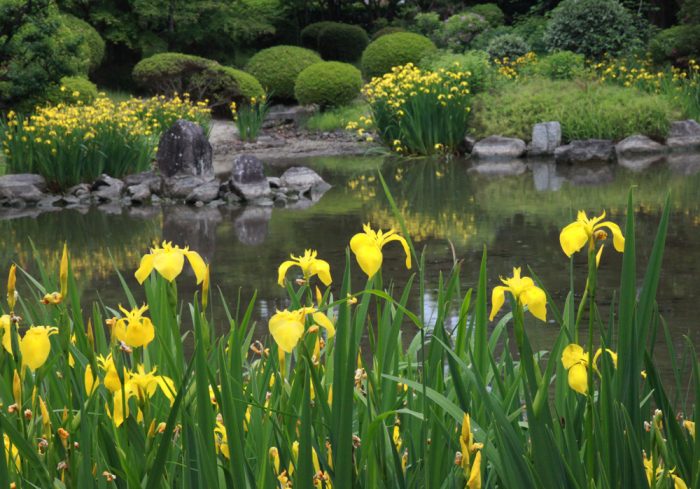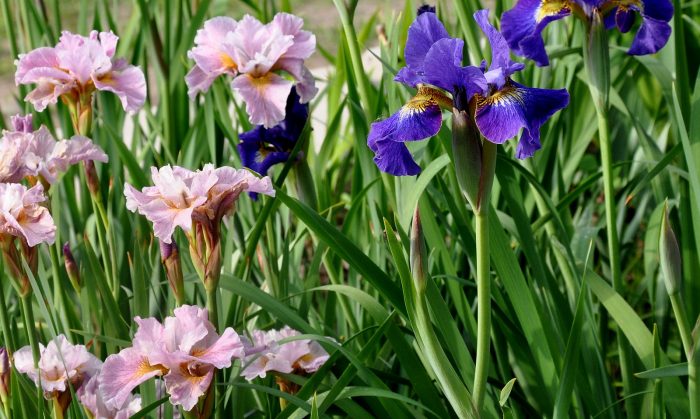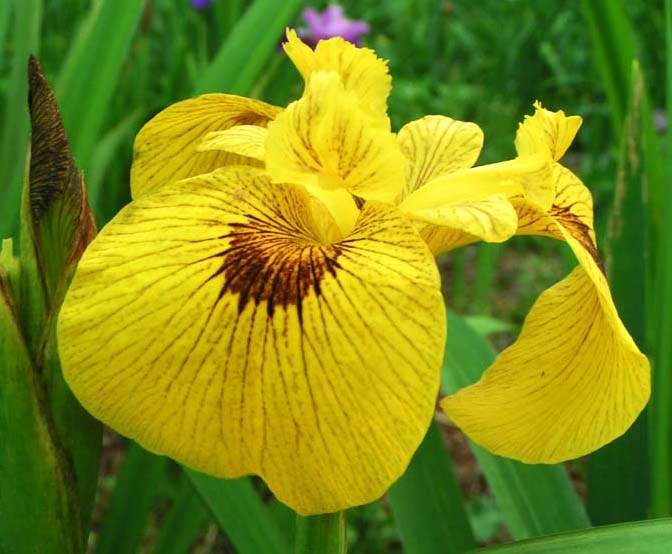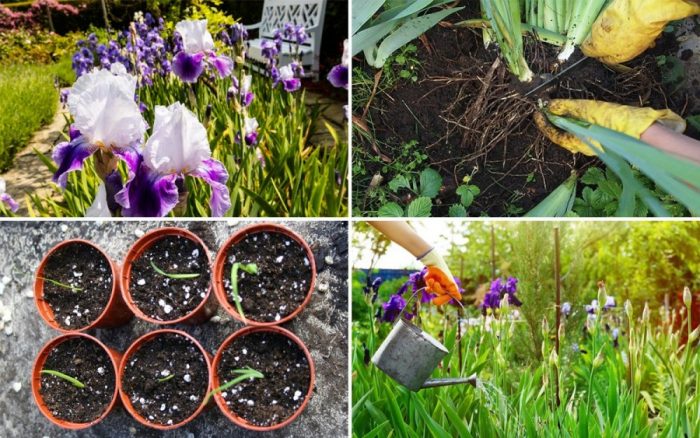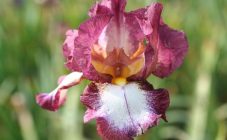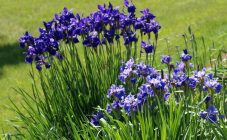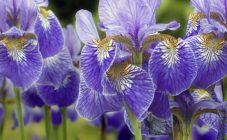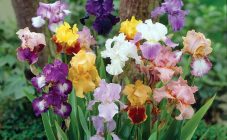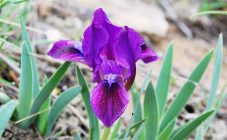Content:
One of the frequent adornments of natural and artificial reservoirs is marsh iris. Despite the unattractive name, this perennial plant is a beautiful and unpretentious flower.
What a marsh iris
This perennial herbaceous flower belongs to the Iris genus, which has more than two hundred species, the Iris family. If we translate Latin in its name Iris pseudacorus, we get "false aira iris", ie similar to calamus (for this reason it is also called "iris calamus"). There are also many popular names for this wonderful plant: aquatic iris, plaits, violet root, marsh cockerel, horsetails, lobistik. Due to the similarity of the flower to the flag mast in English, its name sounds like "yellow flag".
In everyday life, this perennial is most often called water or bog iris, which very accurately characterizes the place of its growth - mainly river floodplains, shores of freshwater reservoirs. Iris also reproduces with the help of water - its seeds do not sink in the water due to the waterproof peel, but are carried by the current (such plants are called hydrochores), which allows perennial bushes to spread to vast new territories. Also, most likely, waterfowl birds carry the seed of water irises.
Swamp iris is a very useful plant. Even in ancient times, its roots were dyed brown skin. Also, the rhizome of this flower is used for their own purposes by cooking and traditional medicine. It has anti-inflammatory, expectorant and laxative effect, decoctions from it help with stomach disorders and colds, as well as in the field of gynecology. The water iris extract is an irreplaceable medicinal component of many dietary supplements and medicinal preparations for the treatment of sepsis, inflammation of the pancreas and wounds.
Now marsh iris grows almost everywhere in Europe, the Far East, western Siberia, Japan and China, as well as the Mediterranean and the Americas.
Iris water possesses extraordinary vitality and mass germination of seeds (so-called self-sowing), a powerful root system resembles a weed - it has the property of very firmly holding onto the soil, which is very difficult to pull out 2-3 month old seedlings.
Plant characteristic
Iris yellow marsh rather tall flower (from 0.9 to 1.5 meters). The leaves are flat, long and straight. The color varies from deep green to waxy-gray (almost blue). There are specimens with variegated leaves. On a branched stem, 12-15 peduncles grow. Flowers have two upper petals slightly underdeveloped. They are yellow-golden in color, with a large orange spot. Sometimes there are false white irises of a delicate white color. Flowering occurs from early June to the 1st decade of July. Iris thickets are very attractive to bees and butterflies, they are the main pollinators of the flower, which is considered an excellent honey plant.
The roots are strong and branched, which ensures stable and fast growth of iris flowers. In the marsh variety of this plant, the dissected root is at first light, quickly turns brown.Preferred habitats are dry places on the banks of water bodies, however, if the water level becomes too high, irises can withstand a long stay in the water, even if the soil is flooded to 0.3-0.4 meters in height. The flower does not tolerate low humidity, it ceases to be so beautiful and attractive.
Characteristics of crop species
Yellow marsh iris, calamus iris and pseudoarion iris are not different species of the same crop, as some inexperienced growers believe. This is the name of the same flower, their description is absolutely the same. However, it is the basis for many cultivars and hybrids of ornamental irises, the growth of popularity, active selection and cultivation of which began only in the 2nd half of the 20th century (before that, the species of bearded irises was used more for hybridization work). The German breeder E.Berlin was most involved in breeding new varieties of marsh iris, who developed a whole line of varieties of marsh iris. Also bred and successfully grown:
- Umkirh - the flowers are pale yellow with hints of pink;
- Holden Clow - a thin purple mesh runs along the yellow petals, the top two are completely purple;
- Sun Cascade and Dable Pagoda - have a slight doubleness of the inflorescences;
- Kurlen is an original natural hybrid of marsh irises of the Kursk and Leningrad regions; it has flowers one and a half to two times larger than those of the wild;
- Iris Mtskhetsky is an elegant variety, bred in Georgia, has distinctive features (narrow leaves with practically no wax coating, the shade of yellow on the flowers is very pale), which make it possible to define it as a separate species of marsh iris, wintering for such flowers is very problematic;
- Roy Davidson - bred by American B. Hager, differs in wide leaves, shimmering with gloss, on which thrips does not sit - a constant pest of irises, as well as cold intolerance (requires shelter);
- Bastarda - has a horizontal arrangement of petals, in contrast to those that are lowered down, like in the original water irises, there is also no characteristic orange spot; the flowers are larger than average, painted in amazing pale pink with a fawn tint;
- Variegata is one of the best bred iris varieties, green-yellow foliage, striped.
Features of planting and care
Planting and growing marsh iris is not difficult at all. Uncultivated plants propagate by self-sowing or by hand in the autumn, you just need to monitor the depth of immersion of the seeds to prevent them from being washed out to the surface by rain or a stream of water from a hose. Domesticated varieties can be bred by simply dividing the roots that have buds.
It is recommended to plant irises from August to September - then they have the highest survival rate. Having chosen a damp place, protected from the wind, you can place the roots of the killer whales along with a 0.2-0.4 m planting capacity in the prepared hole.
This perennial plant is not very demanding for the type of soil, however, soil moisture is important for marsh iris during planting and care, and can grow excellently in water. It is desirable that this is an open, illuminated area, the acidity of the soil is about 7.0, with the presence of a large amount of organic matter. You can periodically carry out mulching with humus to improve decorativeness.
It is quite simple to care for the plantings of irises - it is enough to monitor the humidity level, periodically fertilize with potassium-phosphorus compounds, and also separate the bushes every 5-7 years to reduce the likelihood of diseases.
Swamp iris in landscape design
Landscaping very often uses marsh iris flowers to beautify gardens in which they try to create a natural landscape. Iris look good:
- in compositions where bushes or trees are the main weight;
- in green hedges;
- in flower beds with other perennial plants;
- monoflower on lawns or specimen groups;
- as a framing for natural and artificial ponds and border plantings.
Perennial marsh irises with bright yellow flowers are very fond of water and grow along the banks of reservoirs. The design of the plots, made with their help, is always pleasing to the eye, breeding and maintenance is not difficult.
